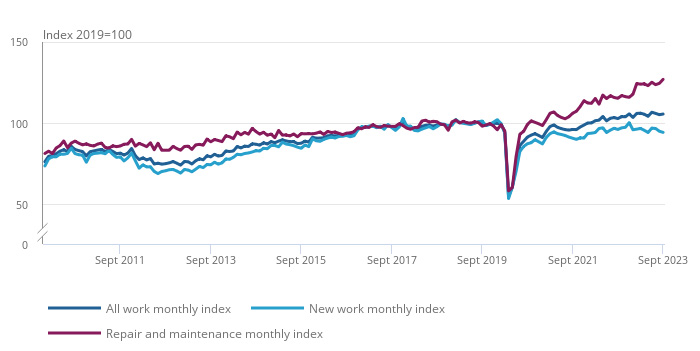Overhauling manual and often time-consuming credit control processes can be the first step for construction firms to ease some of the economic pressures
The UK construction industry is a sector which relies on ‘sustained periods of economic growth for it to succeed. But recent years of political and economic uncertainty have taken its toll on the sector and is now being reflected through rising insolvencies.
Recent insolvency figures show UK construction firms are going insolvent at the fastest rate in over a decade. Furthermore, the construction industry is also not immune to late payment culture either. More than half of firms were paid late in 2022 – further compounding the cash flow threat to firms.
Some respite for construction firms is that the latest technology is now on-hand to bolster cash flow through these difficult times.
Lynne Darcey Quigley, CEO and founder of Know-it comments:
“Our construction industry is in need of greater support and if it’s not coming from government, then firms should turn to technology solutions to help steer them through these difficult conditions.
“Overhauling manual and often time-consuming credit control processes can be the first step for construction firms to ease some of the economic pressures. With increased material and labour costs, both large and SMEs (small-medium sized enterprises) operating within the sector continue to feel the pressure on multiple fronts.
“Managing cash flow is the first step for firms to plug any leaks they may be experiencing. The latest solutions are on-hand to not only automate the process but also remove any risk of human error. Manual credit control processes involve a finance professional combing through ledgers to identify where credit is and how much debtors owed. Human error is unavoidable and vital cash can be lost through manual process.
“By embracing technology, construction firms give themselves a better chance of avoiding becoming the next insolvency statistic. Investing in infrastructure during difficult economic times can feel like a difficult decision to make. Suring up credit control processes through automation and removing costly human error will eradicate cash flow errors firms may be going through.
“Delivering construction services is often an expensive endeavour, with further strain being placed on balance sheets by clients refusing to pay within the agreed payment period (often 30 days). Unlike manual processes, automated credit control from end-to-end allows firms to credit check, chase and collect overdue payment all from one platform. Without automation, late payments can go unchecked for too long, by which time the effects it has had on cash flow could be irreversible.”
Lynne concludes:
“The rising insolvencies we are seeing across the UK construction sector should be sending alarm bells to government. Unfortunately, firms aren’t receiving the required support they need to come through the other side.
“Technology is the next best solution for construction firms to turn to in the face of the late payment crisis affecting the sector. For firms struggling to secure cash flow and collect late payments, investing in automated solutions could prove to be the difference between survival or the sector losing another operator.”
Source: Business News Wales








